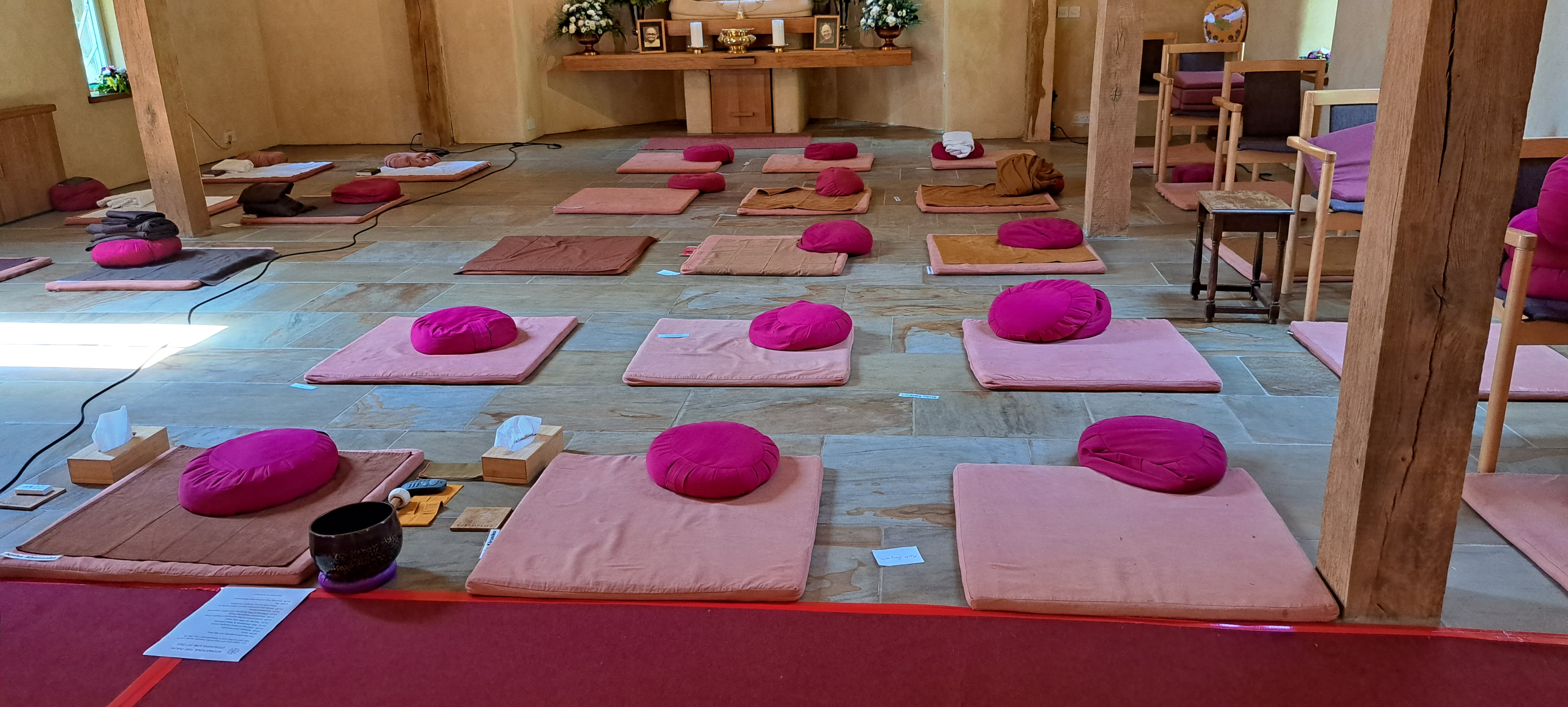What is Meditation?
Meditation is an ancient practice, which has been widely taken up in the West in recent years. Samatha and Vipassana, Serenity and Insight, Mindfulness, and other current meditation practices are all based on the practice as taught by the Buddha some 2,500 years ago.
The Buddha’s teaching is set out in detail in the Pali texts used by the Theravada tradition, which are the basis of all Buddhist traditions. Three steps of the Noble Eightfold Path together comprise the training of the heart and mind:
- Right Effort: the effort to let go of harmful states of mind and to develop beneficial ones, above all loving-kindness (towards all beings including ourselves), compassion, sympathetic joy, and equanimity,
- Right Mindfulness: clear awareness of the body, the feelings, the mind, and objects of the mind, and
- Right Concentration: unifying the mind and holding the attention on to one object.
Meditation practice means setting aside time to focus exclusively on this training of the heart and mind. These three aspects develop together, to change our attitudes and our thinking throughout our daily life.
The principal teachings on meditation in the Pali texts are the Mindfulness of Breathing and the Four Foundations of Mindfulness. In outline, it follows four stages:
- Contemplating the body, starting with following the breath, and leading to calming the body,
- Contemplating the feelings, leading to calming the feelings,
- Contemplating the mind, letting go of stray thoughts, leading to serenity and unification of the mind, and
- Contemplating phenomena (objects of the mind, things as we experience them), leading to insight or greater understanding of reality.
Through patiently returning to the present moment, experienced in following the breath, we re-discover the natural peace of mind and spaciousness that lies beneath our day-to-day preoccupations.
Both the practice and the experience of meditation is very well described by Ajahn Amaro, the current abbot of Amaravati, in “Finding the Missing Peace” with discussion and guided meditations including:-
- posture, awareness of the body and breath, the balance of alertness and peacefulness, experiencing the present moment;
- stillness or stability in the heart and mind, the flow of perception and feeling, resting in open-hearted awareness;
- seeing that the nature of experience is change, letting go of taking things personally, inter-connection with all things, intuitive wisdom;
- metta (loving kindness), towards all beings and towards ourselves, accepting the way things are right now;
- experiencing things in terms of transience, change and unsatisfactoriness, letting go of the sense of “I, me and mine”;
- letting go of sense desire, aversion, sleepiness, restlessness, states of doubt.
“What is meant by meditation is to experience for oneself a blend of the qualities of peacefulness, wisdom, and understanding … a deeper harmonisation with life.”
“When one learns to calm the mind and look into its nature deeply, it becomes more and more alert and more and more peaceful”.
“By looking and seeing, over and over again, one finds the qualities of peace and clarity within the heart that underlie everything, that are always present.”
